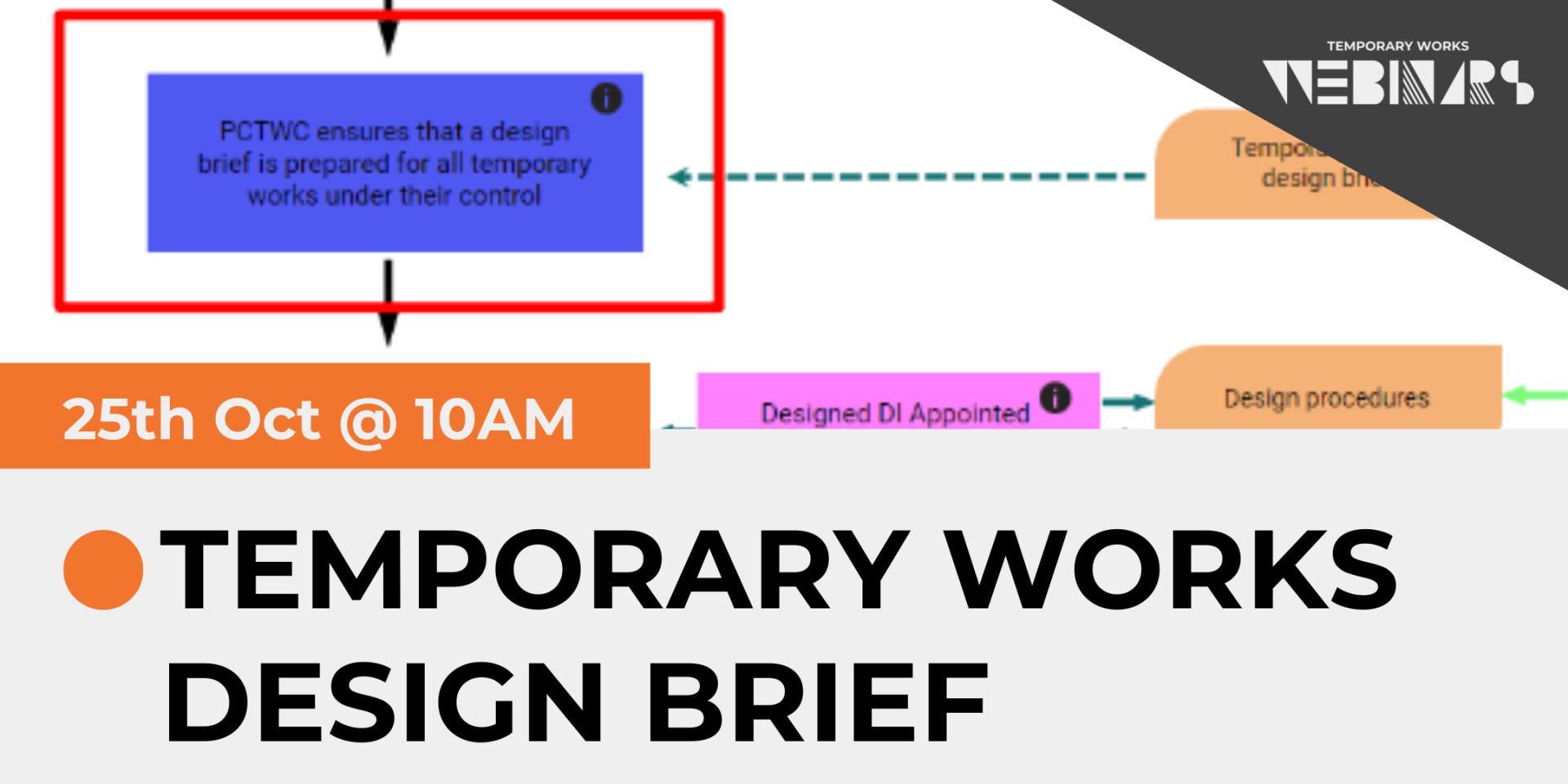
Overview of the importance of effective design briefs in temporary works for construction projects. Focused on how accurate, detailed briefs support safer, more efficient construction outcomes.
The session discusses real-world failures and how poorly structured or missing design briefs can result in catastrophic outcomes, underscoring the need for robust briefing practices guided by BS5975.
Key Topics Covered
Introduction to Temporary Works & Design Briefs
Overview of temporary works, their inherent risks, and the importance of comprehensive design briefs.
Including the history of temporary works, the history of temporary works procedural control, and an overview of BS5975.
Key Elements of an Effective Design Brief
Outline of the essential components of an effective design brief.
- Load requirements
- Ground conditions and site limitations
- Access restrictions and risk levels
- Preferred methods, materials, and equipment
What Makes A Good Case Study
A good design brief provides a clear, detailed roadmap that guides engineers and project teams through critical project requirements, minimising risks and preventing costly errors.
- Providing accurate information
- Highlighting risks to increase safety
- Specifying materials available/preferred
- Expectation of what is required
- Timescale (realistic)
- Design Life
Case Studies of Successful Design Brief Implementation
A look at two case studies on the use of design briefs.
Case Study One – Crane Positioning
Case Study Two – Granada Studios project and crane positioning solution under site constraints

